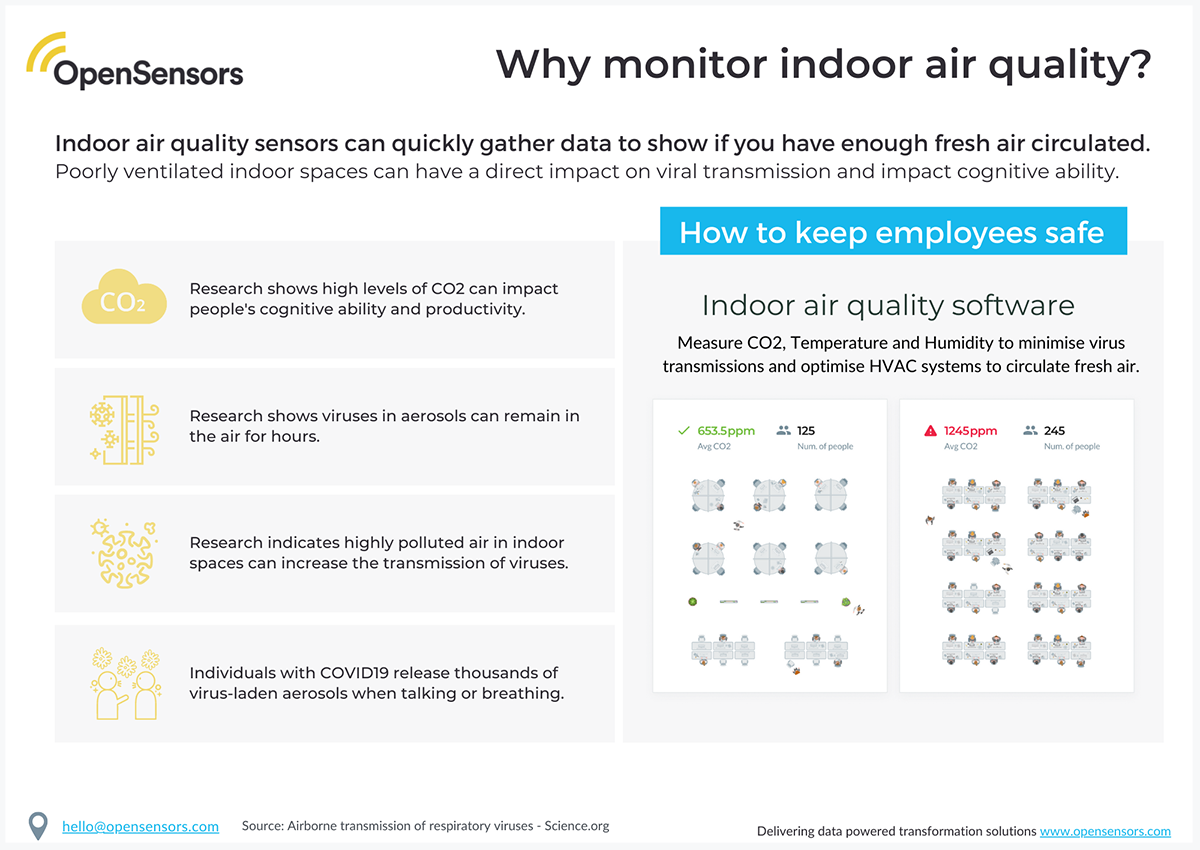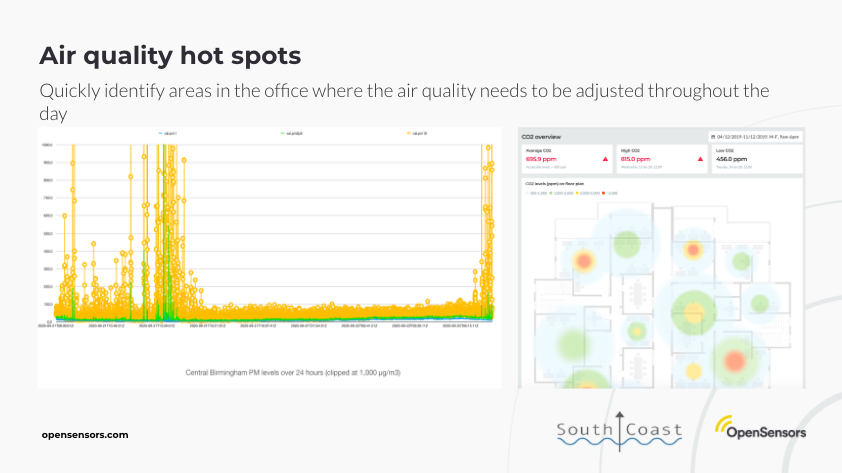
Author Yodit Stanton
Recent research indicates that monitoring and controlling Indoor Air Quality (IAQ) is central to reducing the risk of transmission. Here’s what you need to know and consider when examining your own company’s IAQ.
At a recent event with Bruno Beloff - the co-founder of South Coast Science, a company that creates high precision air quality monitoring devices. Bruno spoke about:
Whilst we cannot (yet) monitor the presence of COVID19 in the air, we can and already do regularly monitor a number of factors which affect the risk of viral transmission: temperature, humidity and CO2.
Under normal circumstances the dangers of high CO2 levels are in relation to productivity, as people become increasingly drowsy.
However, in regards to COVID19 measuring CO2 levels functions as a proxy measurement with high levels indicating that not enough fresh air is circulated to remove viruses from the environment. If CO2 levels rise above 600ppm, not only will employees start to feel lethargic, but also be at higher risk.
Organisations therefore, need to be asking themselves how they plan to bring people back in a safe manner and what solutions they require to ensure their strategy is providing a safe environment.

Temperature, humidity and CO2 levels are all air quality measures well known to workplace professionals as they have been linked to both wellbeing and productivity. Incorporating them into a COVID-centric approach to safety is a natural progression.
However, recent studies have shown a stark relationship between Particulate Matter (PM) levels and COVID19 mortality rates, suggesting that monitoring PM Levels is vital when reintroducing employees to the office environment.
Viruses are believed to spread between humans as aerosols (small particle droplet nuclei) pass into the lungs via respiration. These particles are subject to both physical and biological laws, meaning that the most dangerous particulates are those that measure 5µm or smaller, as these can remain airborne indefinitely in most indoor settings.
In particular, PM2.5 has been shown to be highly dangerous in regards to COVID19, with an increase of 1 microgram per cubic metre (µg/m3) resulting in a 8% increase in COVID19 mortality. This suggests that long term exposure to pollution may put individuals at higher risk should they contract the virus.
In rural areas this finding may not ring alarm bells, but it should be of great concern to those whose offices are located in large, urban centres where pollution is highest.
Monitoring all aspects of IAQ is of vital importance as organisations bring employees back into the fold. The installation of air quality and occupancy sensors which gather data in real time allows organisations to identify trends in air quality throughout the day and draw connections between IAQ and employee behaviour.
This allows one to optimise HVAC systems to ventilate spaces as necessary and adjust internal policies regarding social distancing and capacity management whilst also having the ability to react promptly to sudden changes to ensure that ‘hot spots’ can be identified and avoided.

Furthermore, measuring PM levels on the street level outside an office would allow organisations to judge the effectiveness of their HVAC systems and social distancing policies by drawing analyses against the air quality levels inside office spaces.
Similarly, measuring air quality next to HVAC intakes would enable decisions to be made surrounding when is best to ventilate and when to let the building ‘hold its breath’ - there will be a fine line to tread between allowing CO2 levels to rise and keeping the PM count low; air quality sensors and analytics tools combined with occupancy monitoring enables companies to find this balance.
As more people return to the office, measuring the health of your office buildings will become critical to ensure air quality levels do not exceed the threshold benchmarks that would increase the likelihood of viruses spreading.
Monitor your office air quality against recommended benchmarks below:
Integrate environmental sensors to quickly gather data and:
Viewing time: 27mins
Topics: Facilities & Workplace trends, COVID19, Guidance